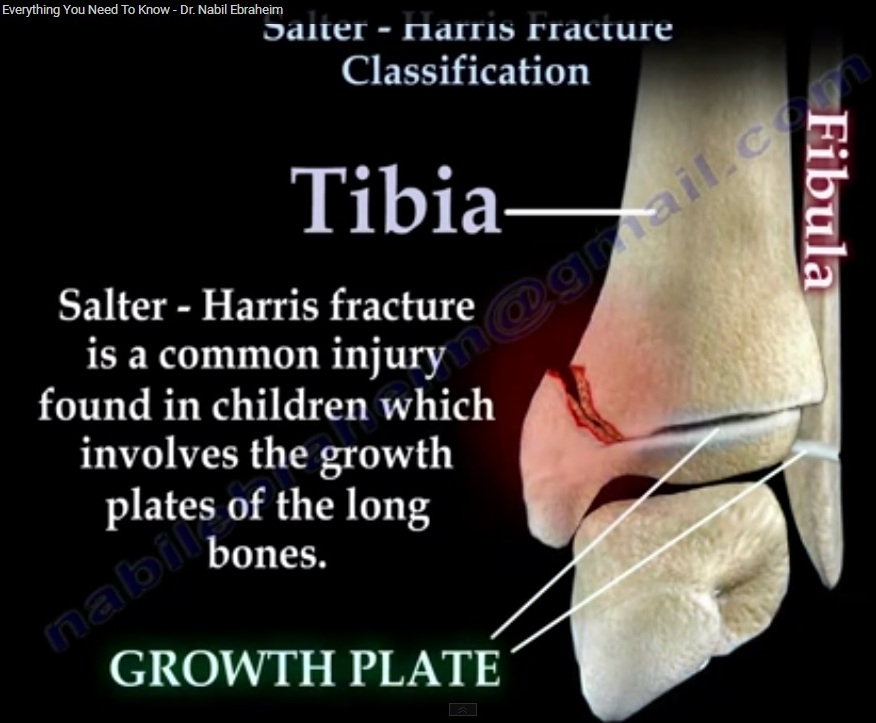Salter – Harris Fracture Classification
Salter-Harris fracture is a common injury found in children which involves the growth plates of the long bones. Approximately 15-30% of all childhood fractures are growth plate fractures and are common in the lower leg bones (tibia and fibula). It is important to detect these fractures as they may affect the growth of the bone if not treated properly.
There are generally five types of Salter-Harris fractures. The higher the type number, the more complications associated with the fracture and worse prognosis.
Type I:
•5% of fractures are type I.
•It may be difficult to diagnose and sometimes diagnosis is clinical.
•It occurs through the weak zone of provisional calcification.
•It is known by fast healing and rare complications.
•Unless there is obvious displacement it may be hard to diagnose.
Type II
•75% of fractures are type II.
•Fracture of the physis (growth plate) and metaphysis.
•The corner of the metaphysis separates (Thurston-Holland sign).
•Fragment usually stays with the epiphysis while the rest of the metaphysis will displace.
•Healing is fast and growth is usually OK
•Distal femur fracture may result in growth deformity.
Type III
•10% of fractures are type III.
•Fracture of the growth plate and epiphysis.
•Split of the epiphysis
•Fracture extends into the articular surface of the bone.
•Requires reduction of the joint
•In distal femur fractures it may result in growth deformity.
Type IV
•10% of fractures are type IV
•Fracture passes through the epiphysis, physis (growth plate) and the metaphysis
•Can cause complications such as growth disturbance and angular deformity.
Type V
•Uncommon, about 5%
•Compression or crush injury of the growth plate
•No associated fracture of the epiphysis or metaphysis
•Initial diagnosis may be difficult
•The highest incidence of growth deformity and disturbance.

good video…..informative…